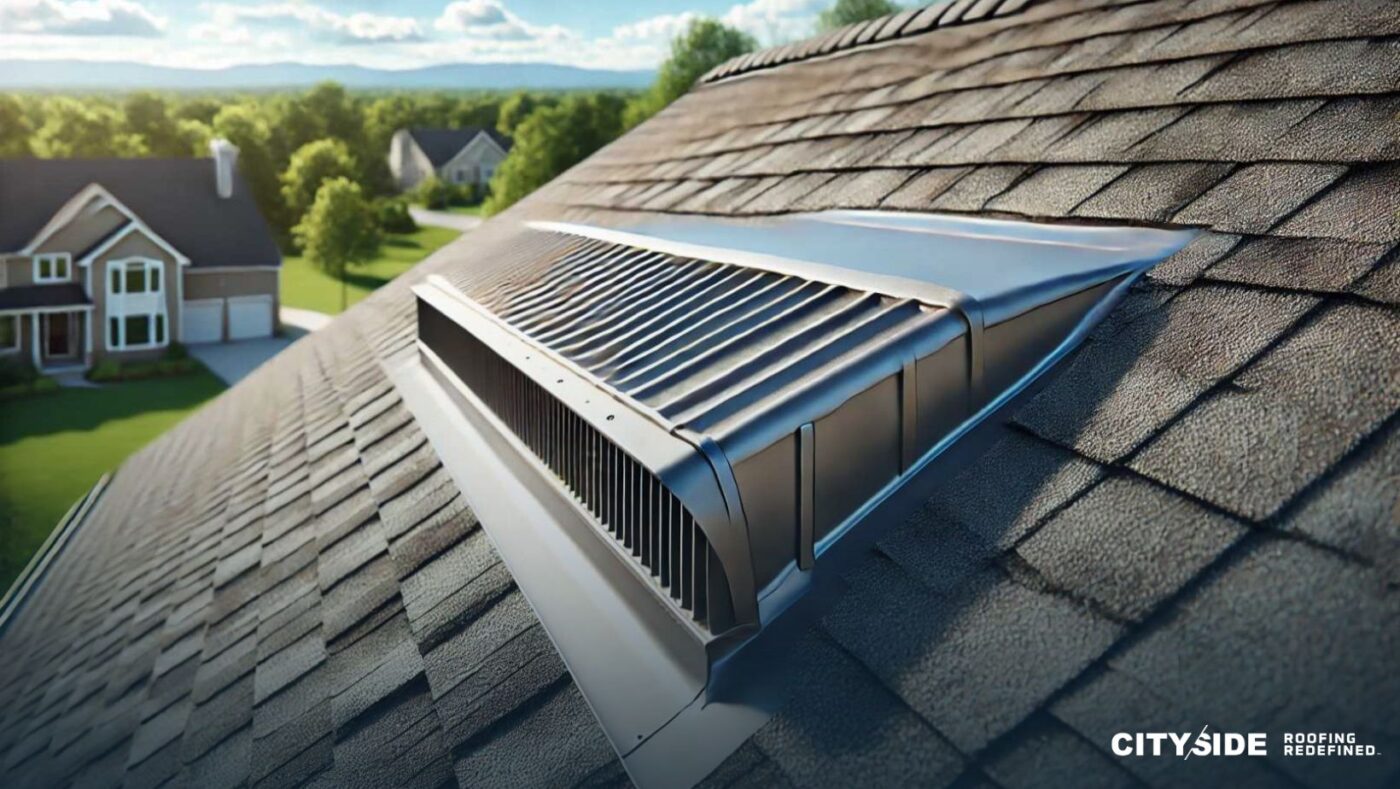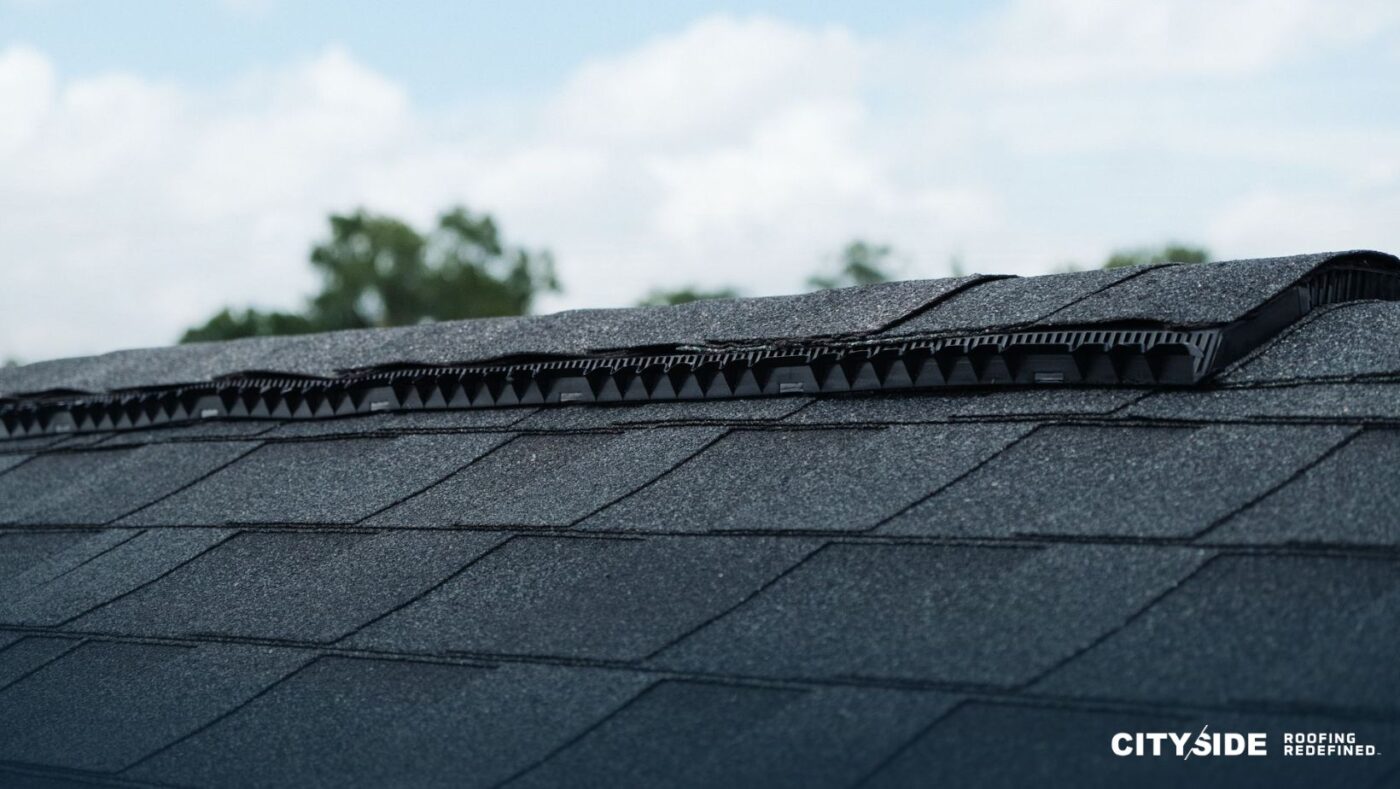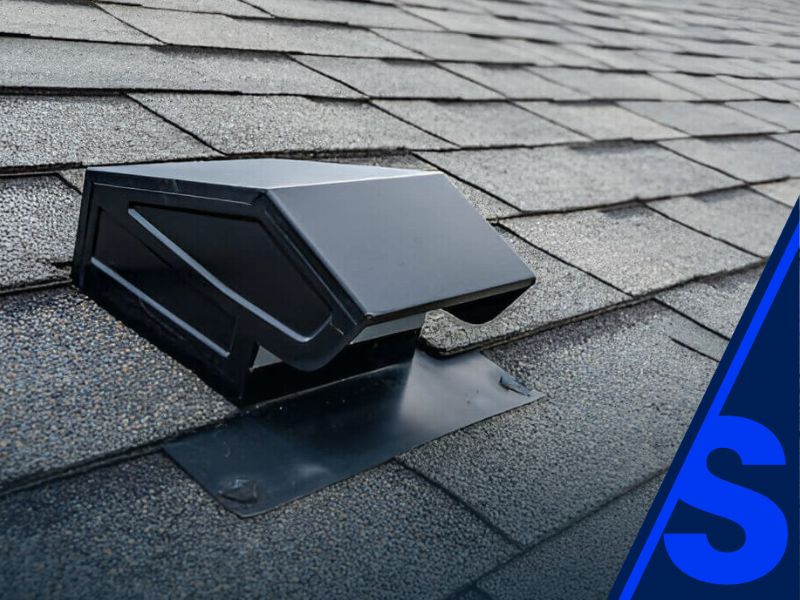Table of Contents
Ridge vents are one of the most critical yet overlooked components in modern roofing systems. For builders, ensuring proper attic ventilation is not just about airflow but also about compliance, warranty protection, and long-term durability of the roofing structure. A ridge vent is designed to balance intake and exhaust ventilation across the roofline, creating a healthy attic environment and reducing costly callbacks for contractors.
This article explains why ridge vents form the backbone of a comprehensive ventilation strategy. It covers installation best practices, compatibility with other ventilation products, and the technical details builders need to deliver code-compliant, high-performing roof assemblies on every project.
Why Does Proper Roof Ventilation Matter in New Construction?
Ventilation is more than just an airflow detail. It is a system-level requirement that impacts building code compliance, warranty validity, and roof longevity. Without proper attic ventilation, builders risk moisture accumulation, higher attic temperature, mold and mildew growth, and structural stress on the underside of roof assemblies.
For production builders, missed ventilation specs often lead to inspection failures or warranty disputes. Using a ventilation calculator ensures accurate assessment of ventilation needs during design and helps align intake ventilation and exhaust ventilation in a balanced way.
When executed correctly, a comprehensive ventilation system increases the durability of roofing materials, reduces callbacks, and supports efficient air conditioning performance year-round.
What Is a Ridge Vent and Why Do Builders Use It?

A ridge vent is a continuous vent installed along the highest point of the roofline, acting as the main exhaust pathway for warm, moist air rising through the attic space. The ridge vent provides uniform ventilation along the ridge and eliminates the inefficiencies of small, scattered vents.
Builders use ridge vents because they are compatible with multiple roofing systems, including asphalt shingles and impact resistant roofing assemblies. When paired with soffit vents, they create effective attic airflow, ensuring cool and healthy attic conditions that prevent moisture issues.
For code compliance, ridge vents are often required in both residential and multifamily applications. The application of ridge vents simplifies inspections, reduces risks of mold and mildew, and ensures longevity of the roofing system.
How Do Ridge Vents Work with Intake Ventilation?
Ventilation requires balance. Exhaust at the ridge must be paired with proper air intake at the soffit. Soffit vents act as the entry point, allowing cooler outside air to flow into the attic while ridge vents act as the exhaust pathway.
Without intake ventilation, ridge vents lose efficiency. Builders must design attic ventilation as a system, ensuring that intake ventilation provides enough airflow to match the exhaust provided by the ridge vent. When properly installed, the flow of air prevents hot, moist air from lingering and keeps the attic space dry and balanced.
Using a ventilation calculator helps builders design this balance and verify compliance with building code ventilation requirements.
Key Vent Features Builders Should Look For
Not all ridge vents are created equal. Builders should evaluate ventilation products based on their vent features, including:
- Internal weather filter to block dust and insect infiltration.
- Impact resistant cap for protection against hail and external damage.
- Long-lasting, durable material to ensure year-round performance.
- Easy installation systems with pre-formed baffle or nail guides.
A ridge vent is designed to deliver effective ventilation along the entire roofline, but only if the features match the climate and application. For example, Florida builders should prioritize durable materials that resist moisture and high UV exposure, while northern regions may require ridge vents engineered for snow conditions.
For vetted product specifications, see CitySide Ventilation Products.
How Ridge Vent Installation Impacts Performance

Installation quality is as critical as product selection. Even the best ridge vent can fail if not properly installed. Builders should ensure:
- Correct alignment along the roofline.
- Nails are applied according to manufacturer spacing requirements.
- The cap shingles fully cover the vent for aesthetics and weather protection.
- External baffle design is compatible with the roofing system.
Easy installation and manufacturer-approved techniques are essential for warranty coverage. Builders can reduce risks by working with a qualified contractor like CitySide Roofing, whose teams follow manufacturer guidelines and document installation for builder assurance.
How Do Ridge Vents Prevent Moisture Issues in Attics?
One of the main benefits of ridge vents is moisture control. Without proper attic ventilation, warm air entering the attic can condense on the underside of roof assemblies. Over time, this condensation leads to mold and mildew, insulation deterioration, and even truss damage.
Ridge vents maintain effective ventilation along the roofline, preventing moisture buildup and keeping attic spaces dry. This is especially critical for multifamily projects where trapped moisture can spread across multiple units, creating large-scale warranty and liability issues.
For builders working on code-sensitive projects, ridge vents are an effective solution to avoid these risks while meeting attic ventilation requirements.
Ridge Vents vs Other Exhaust Ventilation Options
Builders sometimes compare ridge vents to box vents, gable vents, or powered exhaust fans. While each option has a place, ridge vents provide superior continuous airflow, particularly on long rooflines.
- Ridge vents offer uniform exhaust ventilation across the entire roofline.
- Box or gable vents create uneven airflow and often fail to ventilate the whole attic space.
- Powered fans add complexity, require power sources, and may disrupt intake-to-exhaust balance.
For long-lasting performance, ridge vents remain the most builder-friendly and cost-effective exhaust ventilation choice.
Why Are Ridge Vents Important for Asphalt Shingle Roofs?
Asphalt shingle manufacturers often require ridge vents as part of their roofing system warranty. Without continuous ventilation, attic temperatures can exceed safe limits, causing shingle damage, warping, or premature aging.
Builders installing asphalt shingles should confirm ventilation designs meet both building code requirements and manufacturer warranty conditions. Ridge vents provide continuous exhaust ventilation that protects the roofing system, ensuring warranty compliance and reducing risk of callbacks.
How Builders Can Calculate Ventilation Needs
Ventilation design must be precise. Building codes typically require 1 square foot of ventilation for every 150 square feet of attic space, with intake and exhaust balanced.
Using a ventilation calculator allows builders to determine exact ventilation needs during design and avoid under-ventilating or over-ventilating the attic. A comprehensive ventilation strategy ensures builders meet code, pass inspections, and deliver durable roofing systems.
For builder support, CitySide provides ventilation system design services that include code-compliant calculations and application-specific product recommendations.
Common Builder Mistakes to Avoid
Even experienced crews can make mistakes with ridge vents. The most common errors include:
- Forgetting to balance intake and exhaust ventilation.
- Installing ridge vents without removing the roof sheathing cutout.
- Using nails that are too short, leading to loose cap shingles.
- Selecting incompatible ridge vents for the roofing system or climate.
Avoiding these mistakes ensures effective attic ventilation, warranty compliance, and reduced maintenance calls.
How Ridge Vents Contribute to Longevity and Durability

Ultimately, ridge vents are not just a code requirement. They are a long-term investment in roof durability. By providing effective attic ventilation, they prevent excessive attic temperature, reduce moisture damage, and extend the lifespan of asphalt shingles and other roofing materials.
A ridge vent is designed to work seamlessly with the roofing system, creating a balanced airflow that improves roof performance and reduces builder liability. Proper attic ventilation ensures the roof remains durable and long-lasting, protecting both builder reputation and project ROI.
Builder Takeaways
- Ridge vents provide uniform exhaust ventilation across the entire roofline.
- Proper attic ventilation requires balanced intake and exhaust airflow.
- Ventilation calculators help builders meet code and design effective systems.
- Installation quality is critical for performance, warranty compliance, and durability.
- Ridge vents extend roof longevity by reducing moisture damage, mold, and shingle deterioration.
- Builders should prioritize ridge vents as the backbone of any comprehensive ventilation strategy.
For builder-focused roofing solutions, including ventilation system design, installation services, and quality assurance documentation, partner with CitySide Roofing. Our team helps builders deliver code-compliant, durable, and efficient roof systems on schedule.



